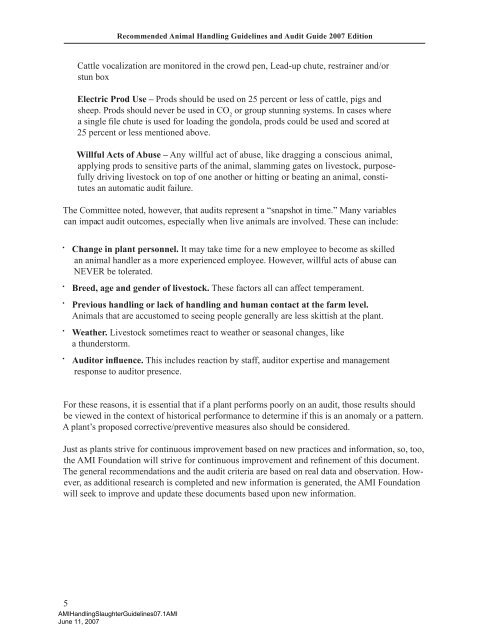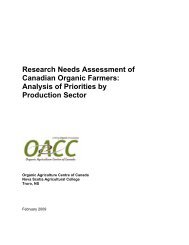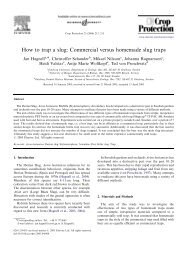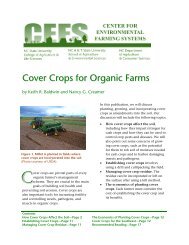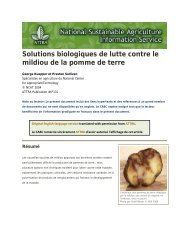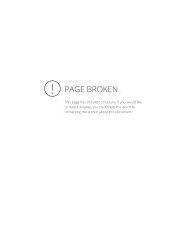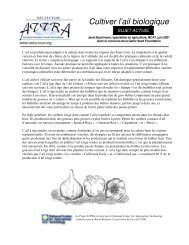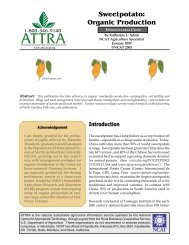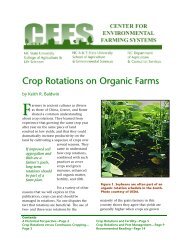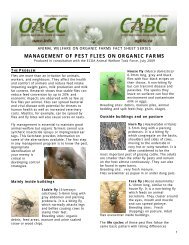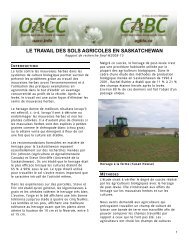Recommended Animal Handling Guidelines and Audit Guide
Recommended Animal Handling Guidelines and Audit Guide
Recommended Animal Handling Guidelines and Audit Guide
- No tags were found...
Create successful ePaper yourself
Turn your PDF publications into a flip-book with our unique Google optimized e-Paper software.
<strong>Recommended</strong> <strong>Animal</strong> <strong>H<strong>and</strong>ling</strong> <strong><strong>Guide</strong>lines</strong> <strong>and</strong> <strong>Audit</strong> <strong>Guide</strong> 2007 EditionCattle vocalization are monitored in the crowd pen, Lead-up chute, restrainer <strong>and</strong>/orstun boxElectric Prod Use – Prods should be used on 25 percent or less of cattle, pigs <strong>and</strong>sheep. Prods should never be used in CO 2or group stunning systems. In cases wherea single file chute is used for loading the gondola, prods could be used <strong>and</strong> scored at25 percent or less mentioned above.Willful Acts of Abuse – Any willful act of abuse, like dragging a conscious animal,applying prods to sensitive parts of the animal, slamming gates on livestock, purposefullydriving livestock on top of one another or hitting or beating an animal, constitutesan automatic audit failure.The Committee noted, however, that audits represent a “snapshot in time.” Many variablescan impact audit outcomes, especially when live animals are involved. These can include:· Change in plant personnel. It may take time for a new employee to become as skilledan animal h<strong>and</strong>ler as a more experienced employee. However, willful acts of abuse canNEVER be tolerated.· Breed, age <strong>and</strong> gender of livestock. These factors all can affect temperament.· Previous h<strong>and</strong>ling or lack of h<strong>and</strong>ling <strong>and</strong> human contact at the farm level.<strong>Animal</strong>s that are accustomed to seeing people generally are less skittish at the plant.· Weather. Livestock sometimes react to weather or seasonal changes, likea thunderstorm.· <strong>Audit</strong>or influence. This includes reaction by staff, auditor expertise <strong>and</strong> managementresponse to auditor presence.For these reasons, it is essential that if a plant performs poorly on an audit, those results shouldbe viewed in the context of historical performance to determine if this is an anomaly or a pattern.A plant’s proposed corrective/preventive measures also should be considered.Just as plants strive for continuous improvement based on new practices <strong>and</strong> information, so, too,the AMI Foundation will strive for continuous improvement <strong>and</strong> refinement of this document.The general recommendations <strong>and</strong> the audit criteria are based on real data <strong>and</strong> observation. However,as additional research is completed <strong>and</strong> new information is generated, the AMI Foundationwill seek to improve <strong>and</strong> update these documents based upon new information.AMI<strong>H<strong>and</strong>ling</strong>Slaughter<strong><strong>Guide</strong>lines</strong>07.1AMIJune 11, 2007


